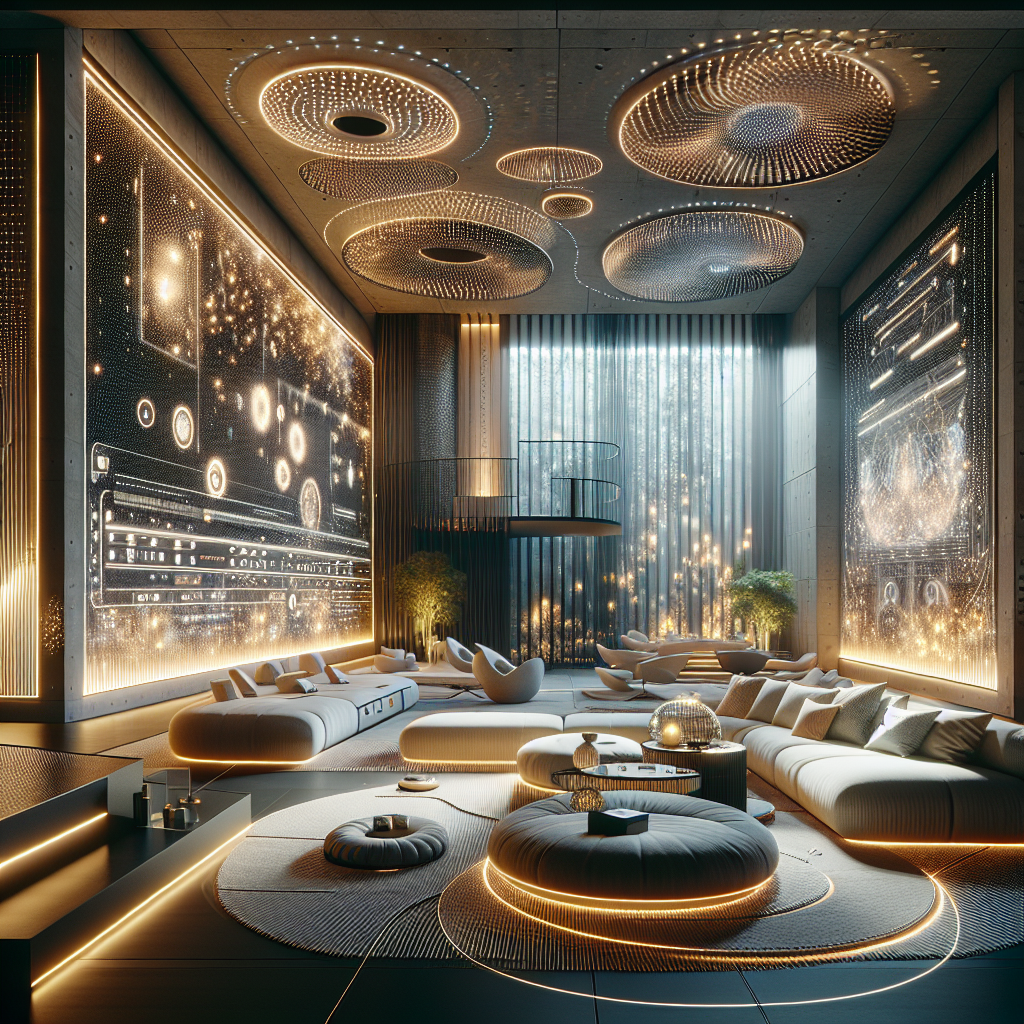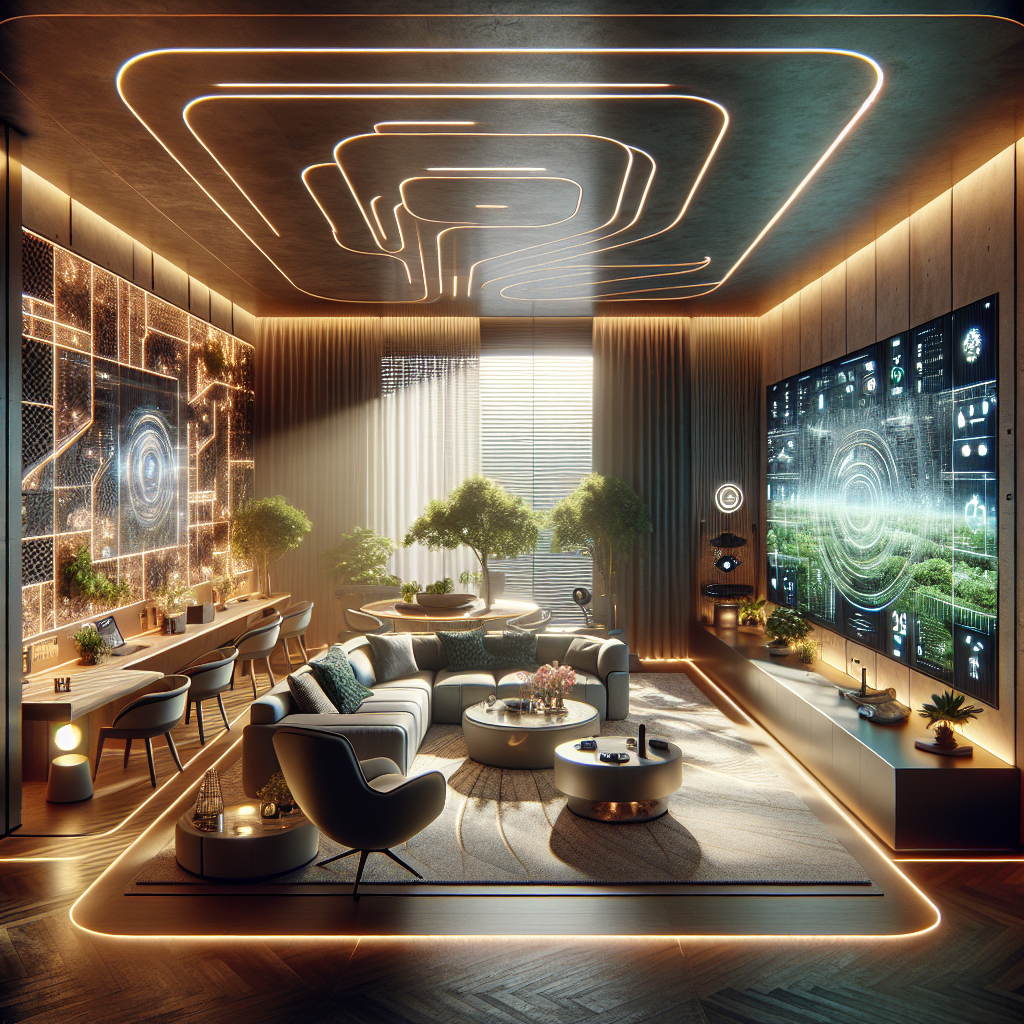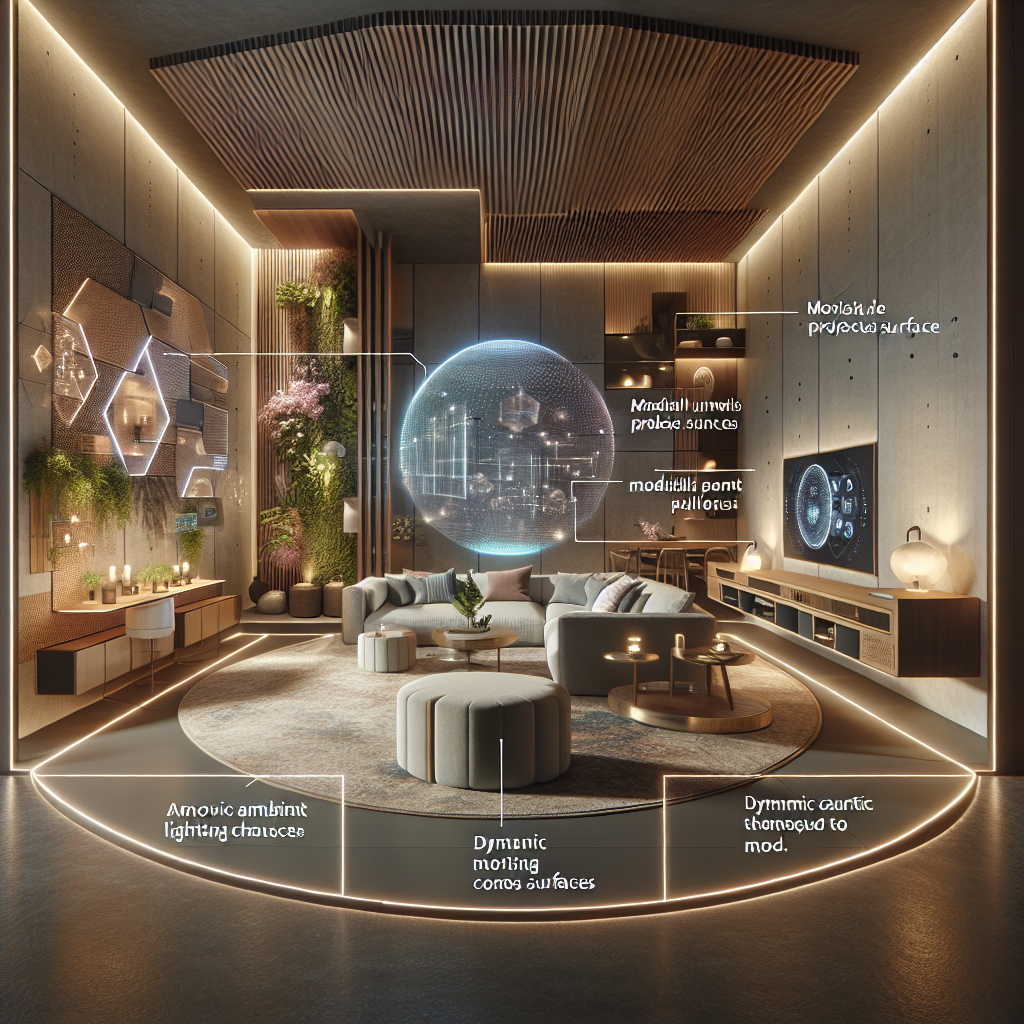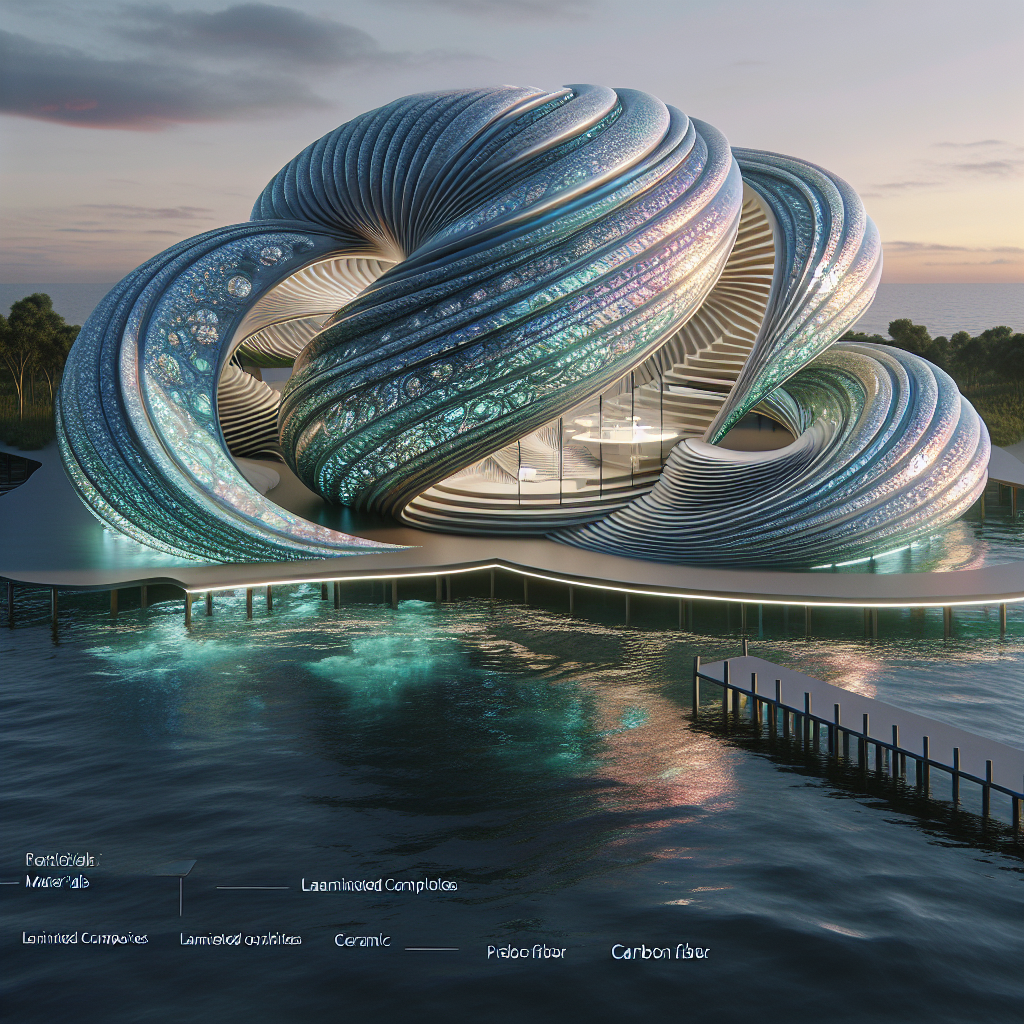AI-Powered Home Entertainment Systems: The Future of Living Rooms
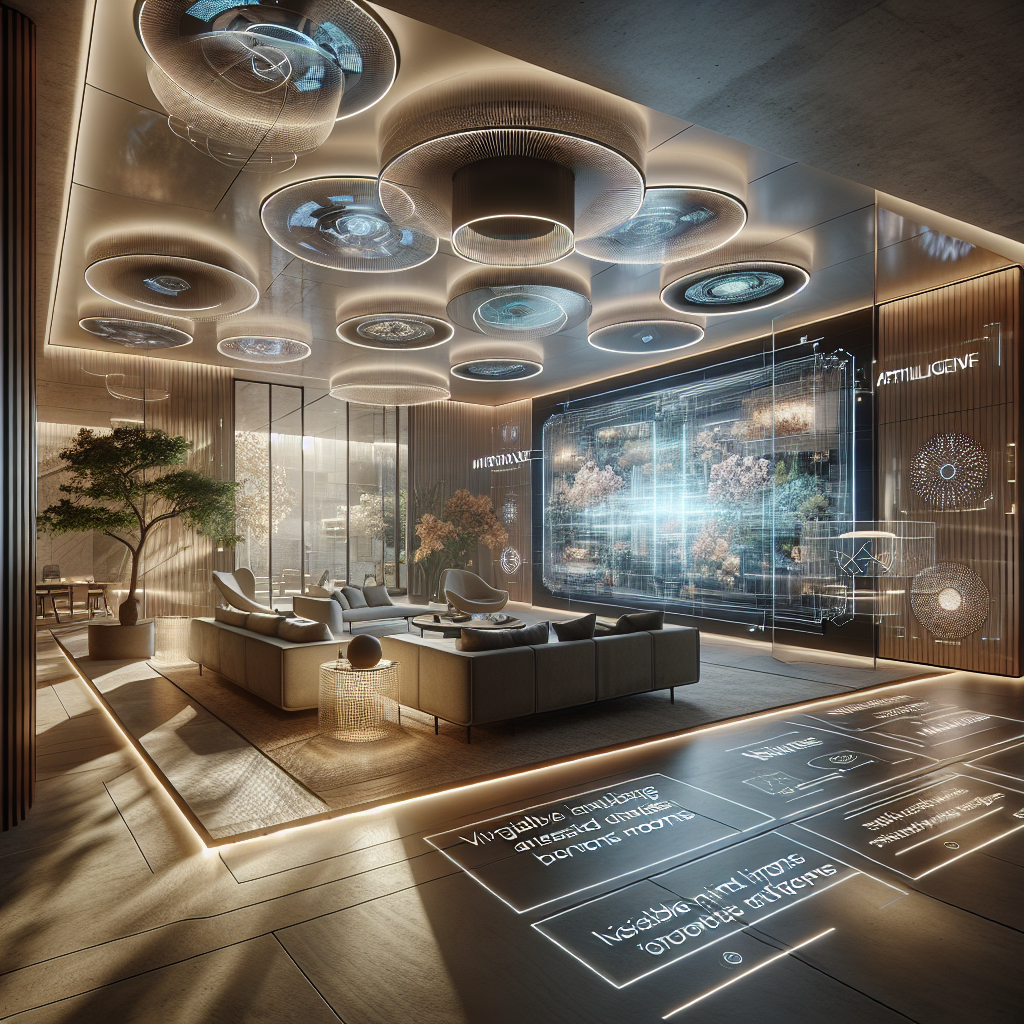
The living room has always been the cultural heart of the home—a space where architecture, design, and technology converge to shape how we gather, relax, and connect. Today, this central space is undergoing a profound transformation. With the rise of AI-powered home entertainment systems, the living room is no longer just a stage for passive consumption but an intelligent, adaptive environment that anticipates our moods, curates our experiences, and redefines the very notion of domestic comfort. For architects, interior designers, and design-forward homeowners, this shift signals a new era where artificial intelligence is not simply embedded in devices but woven into the fabric of living spaces themselves.
The Evolution of the Living Room
Historically, the living room has mirrored cultural shifts—from the formal parlors of the 19th century to the television-centric lounges of the mid-20th century. Today, the integration of smart home technology has already reoriented the living room into a multifunctional hub. Voice assistants, streaming platforms, and connected lighting systems have laid the groundwork. Yet the arrival of AI-powered entertainment systems elevates this integration to a new dimension: one where the room itself becomes an intelligent ecosystem.
According to a 2024 report by PwC, the global smart home market is projected to surpass $170 billion by 2030, with entertainment technologies leading the charge. This trajectory reflects not only consumer appetite for convenience but also a deeper desire for personalized, immersive experiences that blur the line between architecture, design, and digital innovation.
From Passive Screens to Intelligent Environments
Traditional entertainment systems have always been object-centric: a television, a sound system, a gaming console. In contrast, AI-powered systems shift the focus from devices to environments. Imagine a living room where lighting adjusts dynamically to the narrative arc of a film, where acoustic panels reconfigure themselves to optimize sound for a concert stream, or where the furniture subtly shifts to accommodate a more immersive gaming experience.
This concept aligns with the principles of responsive design, where architecture adapts fluidly to human needs. In practice, AI systems analyze user behavior, preferences, and biometric feedback to orchestrate a holistic sensory experience. The living room becomes less a static backdrop and more a living organism—a space that listens, learns, and evolves.
Designing for Immersion: The Architectural Dimension
For architects and interior designers, the rise of AI entertainment systems demands a rethinking of spatial composition. No longer is the television the singular focal point. Instead, walls may double as projection surfaces, ceilings as acoustic modulators, and furniture as interactive interfaces. The design challenge lies in integrating this technology seamlessly—ensuring that the space remains elegant, timeless, and human-centered.
Consider the growing popularity of virtual reality environments. As VR and AR merge with AI, living rooms may soon transform into adaptive theaters, wellness sanctuaries, or collaborative workspaces at the flick of a command. The material palette, too, plays a role: matte finishes that reduce glare, modular furniture that accommodates shifting layouts, and textiles embedded with sensors that respond to touch or temperature.
Case Studies: Intelligent Living Rooms in Practice
Several pioneering projects already hint at this future. In Tokyo, a high-rise penthouse designed by Kengo Kuma integrates AI-driven lighting that mimics circadian rhythms, enhancing both entertainment and wellbeing. In Los Angeles, a luxury residence by Studio UNLTD features a living room where AI calibrates acoustics in real time, creating concert-hall precision for streaming performances. These examples illustrate how AI-powered home entertainment is not merely a technological upgrade but a new design language.
Such projects echo the ethos of biophilic design, where spaces are crafted to nurture human health and emotion. Here, AI acts as a mediator, ensuring that the technological layer enhances rather than overwhelms the sensory qualities of the space.
The Human Experience: Personalization and Wellbeing
The most compelling promise of AI in home entertainment lies in personalization. Unlike static systems, AI learns from daily routines, adjusting not only content recommendations but also environmental factors. For instance, a family movie night might trigger a warm lighting scheme, lowered blinds, and optimized surround sound, while a solitary reading session could cue soft ambient music and subtle illumination near a lounge chair.
This convergence of entertainment and wellbeing resonates with the broader design movement toward wellness-oriented interiors. By aligning environmental conditions with human needs, AI-powered systems can reduce stress, improve sleep quality, and foster deeper social connections within the home.
Challenges and Ethical Considerations
Of course, embedding AI into the living room is not without challenges. Issues of data privacy, interoperability, and technological obsolescence remain pressing. As Internet of Things ecosystems expand, designers and homeowners must grapple with questions of security and longevity. Will today’s AI-driven projector wall still function elegantly in a decade? How can designers future-proof spaces against rapid technological change?
There is also the question of balance. A living room that is too saturated with technology risks alienating its inhabitants. The art lies in subtlety—ensuring that AI enhances the sensory and social qualities of the space without dominating them. Much like the Bauhaus movement sought harmony between function and form, today’s challenge is to achieve harmony between intelligence and intimacy.
The Future of Living Rooms
Looking ahead, the living room is poised to become the most intelligent room in the home. As AI continues to evolve, we may see systems capable of anticipating emotional states, curating multisensory experiences, and even fostering new forms of social interaction. The living room will no longer be a passive container but an active collaborator in shaping daily life.
For design professionals, this moment offers both opportunity and responsibility. The integration of AI into home entertainment is not just about technology—it is about reimagining domestic space for a new era of human experience. As with past revolutions in design, from modernism to minimalism, the most successful outcomes will be those that marry innovation with empathy, intelligence with beauty.
Final Thoughts
The rise of AI-powered home entertainment systems marks a profound shift in how we conceive of the living room. It is no longer a static space defined by furniture and screens but a dynamic, adaptive environment that learns, responds, and evolves. For architects and designers, this is a call to embrace new tools, rethink spatial hierarchies, and craft living rooms that are as intelligent as they are inspiring. The future of domestic design lies not in more technology, but in better integration—where AI becomes invisible, and the living room becomes a stage for the most human of experiences: connection, comfort, and creativity.
